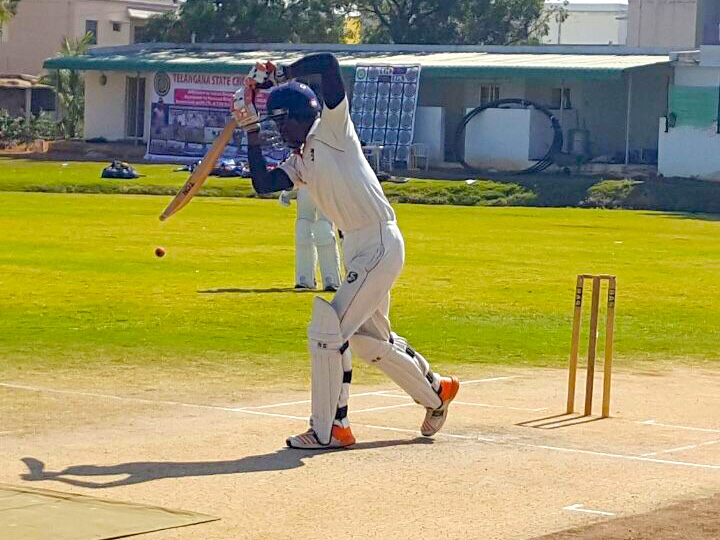|
 Managing players used to be easy didn’t it? Managing players used to be easy didn’t it?
Not any more.
These days you can’t move for all the admin you have to do to keep things running smoothly.
You’re not alone. Everyone involved in the game - coaches, captains and administrators - have so much to do that feeling overwhelmed is commonplace.
Time for a system.

Getting organised
When most people want to get organised they sit down with the mess and decide to work through it until it’s done.
That’s great, but wouldn’t it be much better to avoid the mess in the first place? We need the cricket equivalent of doing the washing up as you go along.
So, ask yourself, what does player management actually mean?
Clearly, this is specific to how you coach. A club coach has different needs to, say, a county academy coach. Players still need to be managed in both cases, but the level of complexity and detail will vary.
So write down what needs to be managed. This could be any or all of,
- Availability
- Runs, wickets and other key stats
- Cricket skill development
- Strength and conditioning
- Bowling workload
- Reviews and reflections
- Communication with other coaches and parents
- Videos and PitchVision data
You also need to write down what happens outside your “bubble”.
Players these days are exposed to a lot of coaches and others influencing their game. You may need to know where you draw the line over what you are managing. For example, a talented young player will be playing for three or four teams over a summer alongside parental influence. Do you want input and management at all these levels?
Once you know this, you can build your system so it covers your needs. A basic level might perhaps just want to know who is available and how they did on the pitch. More advanced or ambitious levels can add more areas to track.
Whatever you decide, the basics are the same, which is to say,
- Capture what’s on your mind.
- Clarify why it’s important.
- Put it in the right place.
- Review things regularly.
- Take action where needed.
This is the five steps of David Allen’s Getting Things Done system and works like a charm at putting things in the right place to get them done at the right time. If you need more detail, I highly recommend you buy the book to get the whole system. However regardless of whether you use the full system or not, we will come back to the five steps later, so take note.
Next let’s look at more granular details of the system.

Motivation and availability
Almost every system needs a way of knowing if players are available to play or not.
This can also be extended to attendance at training sessions. Additionally, most systems could benefit from a softer skilled way of keeping people motivated (and keep being available).
In the old days availability was a sheet in the clubhouse, a word to the coach or, at worst, a phone call. You can still do this but modern communication has made it far easier. You can use one of many apps or messaging tools that work online or mobile to corral your players in time for selecting your best eleven.
Plus, online tools are much better at keeping in touch with players and helping them feel in the loop.
For example, a player might be demotivated if he trains all the time but is rarely selected. With the right approach, the player can be informed about both why they are not getting a regular game and also what they needs to do to change the situation.
We know from research that people are better motivated when they are informed than when they are in the dark, so this trick is super helpful.
What’s the best tool for this?
Every team will be different so there is no single answer.
You need to work out what people are prepared to do to let you know their availability. Messaging can be very difficult if everyone uses different ways to stay in touch with each other. On the other hand, if the whole team use one system already you can easily intergrate.
One of the most complete answers is PitchVision’s Portal. This web service and mobile app gives you cricket-specific messaging with single players and groups.
Now everyone has a smartphone, players can advise availability and discuss selection through the app, or on the web.
The Portal also has the benefit of being tied into other areas of players cricket, like match performances and playing/training videos. This makes motivation a lot easier. You can point to hard numbers and videos to help you stay in touch with everyone regularly which helps them feel loved and important.

Performance and enjoyment
Beyond the participation level, things quickly start to get complicated. We move into levels of performance analysis.
This can be as detailed as you want, but it is important even at lower levels because striving for improvement leads to increased enjoyment of the game. Enjoyment leads to greater retention at every level from beginner juniors to full professionals.
To work out what level of performance management you need, it’s important to go back to the five steps.
Specifically answering the question, “what’s on your mind?”.
Anything that you find is on your mind regularly needs working through.
Say, tracking player’s technical development is important to you, but in the past you have only ever done it by eyeballing and looking at runs or wickets. You want to upgrade things because it’s important.
The next step (step three in the five steps) are to plan to take your camera to nets and plan the session so you can film players techniques batting and bowling. Once you have taken this action, the next action is to take time to analyse the videos and provide feedback. You’ll probably need to do this regularly if you want to see improvements over time.
You can see how moving through the five steps brings a feeling of control and clarity to a big job.
If you like the idea of this but find the job time consuming, you can make things easier with some automation.
PitchVision’s PV/ONE system captures videos for each player automatically in short clips, then uploads them to your Portal for simple analysis, communication and review. Of course as coach you still need to make your key points - that’s never going to be automated - but the boring parts of editing, cutting, uploading and allocating to the right players are all automatic.
Time saved makes it more likely you can do these performance tasks.
The same applies to other aspects of performance.
Modern coaches can track mental toughness, strength and conditioning, and bowling workload over time. Your needs may be to have all of these or none of them.
If in doubt, go back to the question of if it’s on your mind or not. If it is, get your system in place to manage this by going through the five steps.
Reflection and review
Another area that covers every level is the review process.
Although reflection is not new to many cricket players, it is relatively new to make it a formal part of coaching. Yet, it’s now seen as crucial to development for everyone from seniors down to beginners.
It is a well researched method to go over your performance, work out what was good, how you can do more, and what was different.
For a full discussion on review, click here.
Despite the clear benefits, review is often overlooked. One of the biggest barriers to doing reviews is a lack of a systematic approach.
The more serious the cricket, the more likely formal reviews, but they can be time consuming and off-putting for many in the game. Having coached young club players for many years, I can assure you that the prospect of a post-game review in a cold April evening at an away game miles from home is a huge barrier unless there is a system in place!
At training it’s a little easier to review by chatting with the coach after a session, but if there are a lot of players this can easily be lost.
So, step one is to decide if improving reviews is on your mind and important. (Those five steps strike again).
If it is important and you want to build a review system, technology comes to the rescue by making a systematic approach easy.
- Use group chat functions of mobile apps to encourage team reviews.
- Send players their stats from games to act as a starting point for reflection.
- Send players videos of training to discuss technical or other points.
There are many ways to do this of course, but again PitchVision’s Portal keeps it all in one place and gives players instant access to reflection through the web or mobile app on Android and iPhone. As you can imagine, this not only provides a systematic approach to review, but also encourages player-led reflection.
Plus, we get the benefits of automation.
With all a players videos, data and stats in one place and on a timeline, you can add comments and discussion points at exactly the right moment. The player can reflect too, with no messing about across multiple platforms and apps.
Work through the five steps with these solutions in mind and you’ll have a better handle on your review process in no time.
Other coaches and parents
Another increasingly important aspect is the involvement of others in the management process.
If we think back to the old days again we remember times where the involvement of others was not very important. Players would play and train, get some coaching, learn some things and vanish until the next time.
These days things are different. Management is essential because,
- Players have multiple coaches with different philosophies, levels of skill and qualification.
- Players need to avoid being bowled into injury or doing the wrong kind of S&C work.
- Parents want to know what advice their kids are getting.
- Coaches want to make sure they are not offering advice that contradicts each other.
This is the most difficult part to pull off well. Something will always slip through the gaps. The key is having players who are very skilled at processing and analysing advice from different sources. Not every coaching tip will be well thought out or well delivered. If players are able to assess for themselves then the need for central control is removed.
Yet, it’s also nice to know you are at least trying to gather it all. As players move up levels it’s increasingly useful to have better checks and balances. So how do you do that?
One size can never fit all.
You may have noticed this is the overall message of this article!
With enough dedication you could do it with one coach at the centre managing everything. What’s easier is a central database like the PitchVision Portal. Here players, coaches and parents can feed everything into one place and everyone important can see what is happening.
Yet again, it’s automation that leads to greater control and speed and allows more coaches to manage players in more detail than ever before.
So if this aspect is important, you can use the five steps to put a central system in place using technology and automate it as much as possible to save time.
Summary: More for less
As you have seen, the benefits of player management are great, and the barriers to doing it are being lowered by technology.
You still need to decide how much time and energy you can devote to management, but with the right tools and automation you can get so much more done in the same time.
So, choose your level, build your system and get to work with your players. Improved performances are waiting for you to take action.
If you were tempted by the PitchVision Portal as your solution, contact PitchVision for details and pricing.
Discuss this article with other subscribers
|

.jpg)



.jpg)

